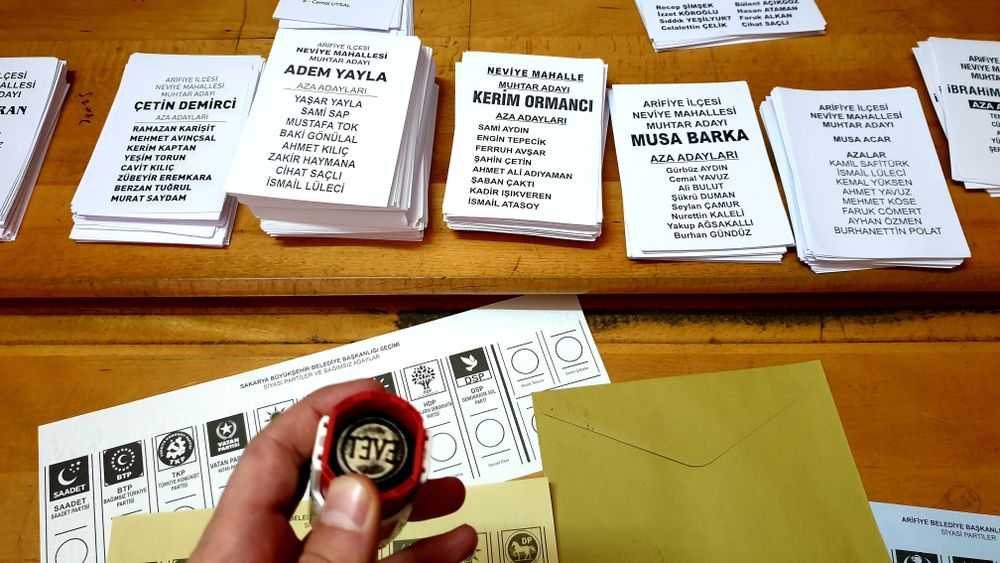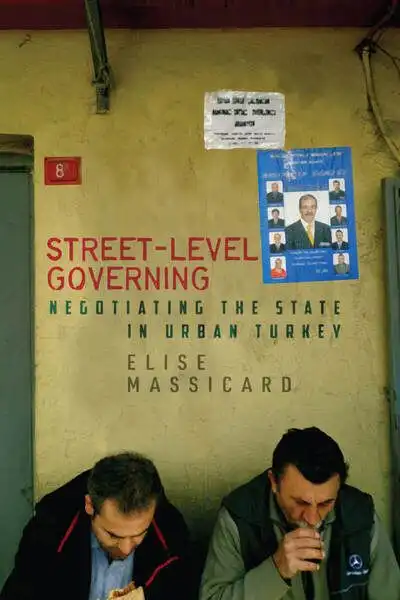Home>The State from its Margins: A perspective from street level Turkey

16.06.2022
The State from its Margins: A perspective from street level Turkey
Interview with Elise Massicard
Muhtars, the lowest-level elected political position in Turkey, hold an ambiguously defined place within the administrative hierarchy. Research Professor at CERI Elise Massicard is the author of Street-Level Governing (Stanford University Press ), the first book to investigate how muhtars carry out their role—not only what they are supposed to do, but how they actually operate—providing an ethnographic study of the state as viewed from its margins. She answers our questions on the muhtar as a hybrid object and her research.
The book focuses on the figure of the muhtar in Turkey, a “hybrid object” as you call it. What are, in broad terms, muhtars main functions and official missions?
I call muhtars “hybrids” because they don’t “fit into any box”. The muhtars are local public agents, at the neighbourhood or village level. They are the authorities' auxiliaries in various fields (public services, public order, social assistance). But they are not bureaucrats in Weber's sense: they do not have the status of civil servants, and they are not permanent; they are in fact elected by the population for five years. From this point of view, they are more like local elected representatives—and indeed, they bring the population's demands for services and needs to the attention of the public authorities. But they are not exactly local elected officials like others; they do not have the capacity to represent the population. Moreover, since the 1980 coup, they are no longer elected on party labels, but on different, micro-local logics. It is therefore difficult to classify the muhtar in the classic categories of political sociology (field administrator, local elected official, street-level bureaucrat...). Beyond merely being intriguing, this observation raises interesting scientific questions. In particular, the one that aroused my interest is related to the fact that muhtars are precisely situated at the intersection of bottom-up and top-down logics. This makes them a very heuristic observation point for understanding the state-society relations.
What led you to investigate this figure in Turkish local politics? Was it because of their ambiguous position, their status as a “boundary figure”?
This interest stemmed from a more general questioning. It is commonly considered—not only in the media and political circles, but also in scientific literature—that the Turkish state is a strong state, which is autonomous from society. This idea is so widespread that it is rarely questioned. However, some colleagues—fellow historians, anthropologists, geographers, and others—and I were not satisfied with this idea, because what we observed in our various research contradicted this idea. My interest in the muhtar arose from this questioning of the autonomy of the state, in relation to society, not only in Turkey but also more broadly. I wanted to look precisely at a touchpoint between “state” and “society”. The muhtars are very versatile connection points, because they deal with different areas of activity and, beyond their official competences, citizens have recourse to them for all sorts of issues. Above all, the muhtar is the daily contact point, the first official instance of referral, and I wanted to move away from a sectoral and event-based analysis and look at the banality of everyday life.
Is this because of muhtars’ contribution to politics from below?
Precisely. I find their contribution to “politics from below” interesting in two dimensions. Firstly, because the muhtarlık—the institution linked to the muhtar—represents the extremity of the capillarity of the state. It is therefore the place of officialdom furthest from the political centre, the one most in touch with society. The second dimension is that “politics from below”, as theorised by Bayart, Mbembe, and Toulador, but which is close to what others have called infrapolitics (James Scott) or low politics (Asef Bayat), is generally studied outside institutions and formal, institutional politics. The literature tends to consider that politics from below has an anti-hegemonic effect—even nature—by definition. Through the muhtar, I wanted to study politics from below in a different way, within an institutional, official framework. However, the book shows that a mechanism such as the muhtar, depending on the way it is used, can indeed have anti-hegemonic effects but can also, under certain conditions, reinforce institutional domination. Consequently, the anti-hegemonic dimension is not consubstantial with politics from below; it depends on where such a politics from below is observed and the tools with which it is analysed.
You mention the many ways in which people get around the forms of domination imposed on them. Can you tell us more about this?

As we understand it, the muhtar (and more broadly the institution of the muhtarlık) is the official figure who is most in touch with society. However, this institution is little codified and little controlled. The ways in which muhtars and citizens use this institution are very flexible and differentiated. It is precisely these uses that determine what the institution produces in political terms. In order to understand these effects, I observed several muhtars and their daily interactions and relations with local inhabitants. In particular, they are elected, and to be re-elected, muhtars need the support of the inhabitants. I observed that the relations that citizens have with the muhtar are quite different from those they have with other public agents. Muhtars are probably the only public officials on whom local inhabitants can exercise some form of power. Of course, muhtars have integrated (like all elected officials!) the imperative of satisfying their inhabitants. This is also the reason why they do not behave like field bureaucrats, for example, but present themselves as serving the inhabitants. This has very concrete effects. For example, while muhtars are supposed to enforce the law, they do not always show much diligence in this task. They are quick to bend the rules to satisfy local inhabitants. The inhabitants know this very well, and they make use of it; it is even often precisely for this reason—for a favour, for a helping hand—that people resort to the muhtar. In short, muhtars are one of the privileged recourses in strategies for circumventing rules.
What was your research methodology for this work on muhtars? Did you encounter any significant difficulties, and what strategies did you adopt to resolve them?
This type of research presents specific difficulties. Firstly, because muhtars are often considered to be powerless and therefore insignificant, there is very little research on them—this could be generalised to other grassroots intermediary figures in other countries, who are structurally understudied. I had little scientific literature to draw on. Secondly, there are very few other written sources on them, apart from the legislative texts that provide a framework for their practice—but which are far from being systematically applied. Finally, their practice is mostly oral and leaves little written record. Everything therefore depended on the field survey. This seemed easy at first sight: muhtars are public persons and accessible to everyone. On the other hand, they have a public image to maintain with their constituents and voters. It was difficult to get past their self-presentation, especially in interviews. To get around this difficulty, I focused on two things: firstly, observation. I spent a lot of time in muhtars’ premises, looking at what was happening there on a daily basis and their interactions with the local people. The muhtars were often reluctant to accept my presence during their interactions with residents; I sometimes had to impose myself to a certain extent. Secondly, the duration. I sampled a limited number of muhtars, visiting them at regular intervals over a long period of time, gradually building trust. This enabled me to observe changes and to go beyond the image they wanted to give of their activity. But this way of doing research was only made possible by my presence on the spot for several years. This type of research is not feasible at a distance, nor with short field stays.
Interview by Miriam Périer, CERI
References
- Jean-François Bayart, Achille Mbembe, Comi Toulador, Le politique par le bas en Afrique noire, Karthala, Paris, 1992.
- Asef Bayat, Life as Politics. How Ordinary People Change the Middle East, Amsterdam, Amsterdam University Press, 2010.
- James C. Scott, Domination and the Arts of Resistance. Hidden Transcripts, Yale, Yale University Press, 1990.
Cover image caption: Illustration: March 31, 2019 Sakarya Turkey / Muhktar elections. EVET mean YES (credits: Hzrth for Shutterstock)
Follow us
Contact us
Media Contact
Coralie Meyer
Phone : +33 (0)1 58 71 70 85
coralie.meyer@sciencespo.fr
Corinne Deloy
Phone : +33 (0)1 58 71 70 68
corinne.deloy@sciencespo.fr
